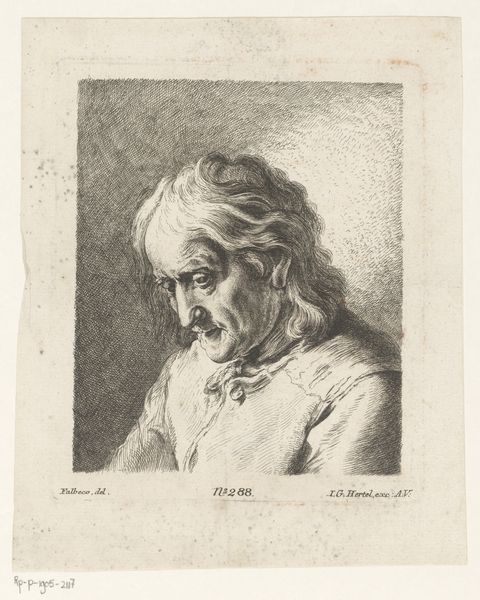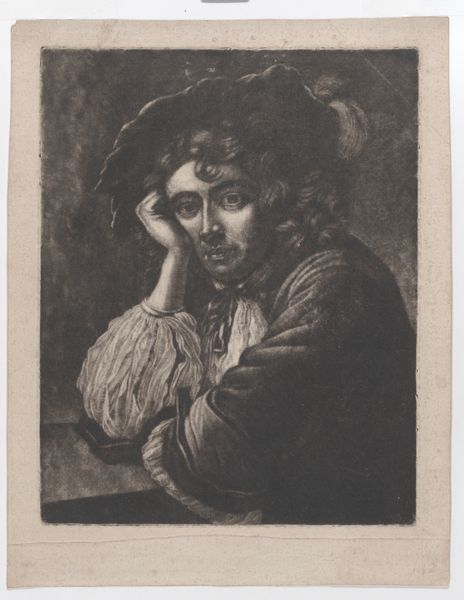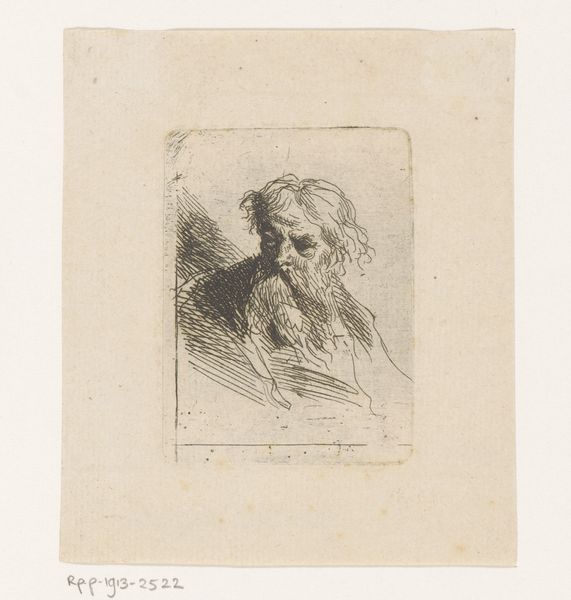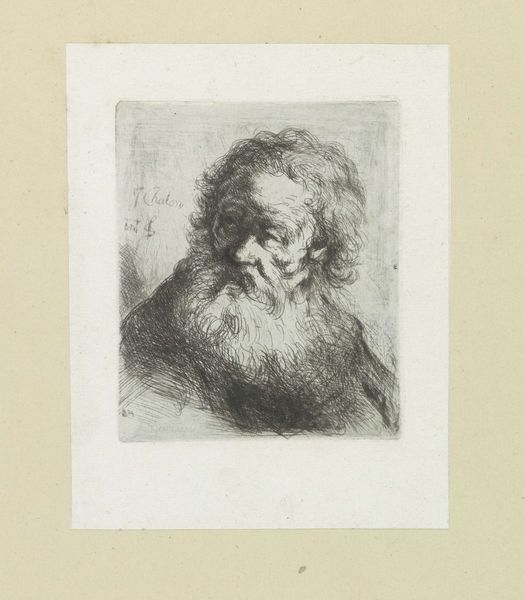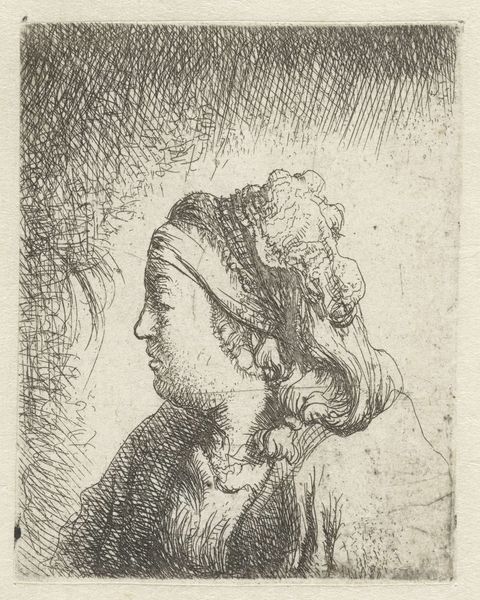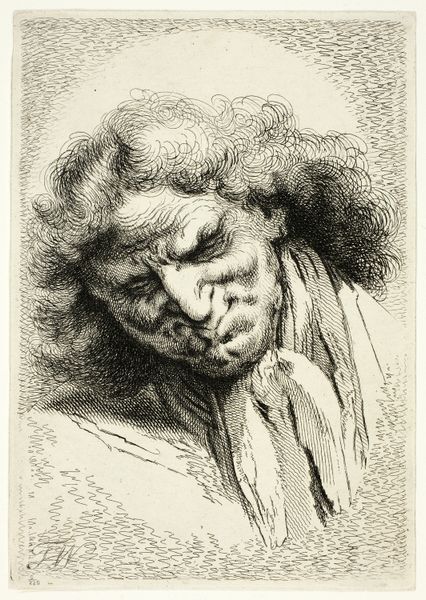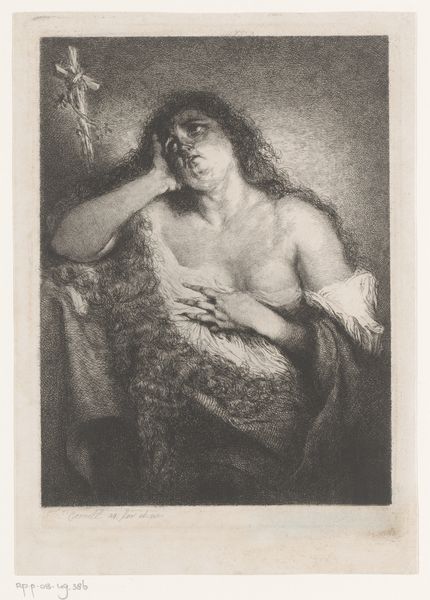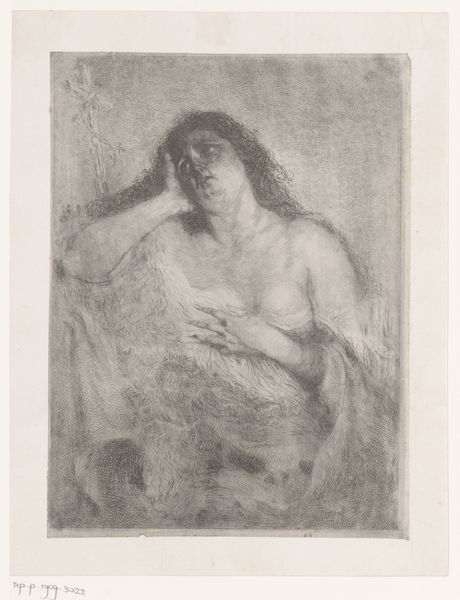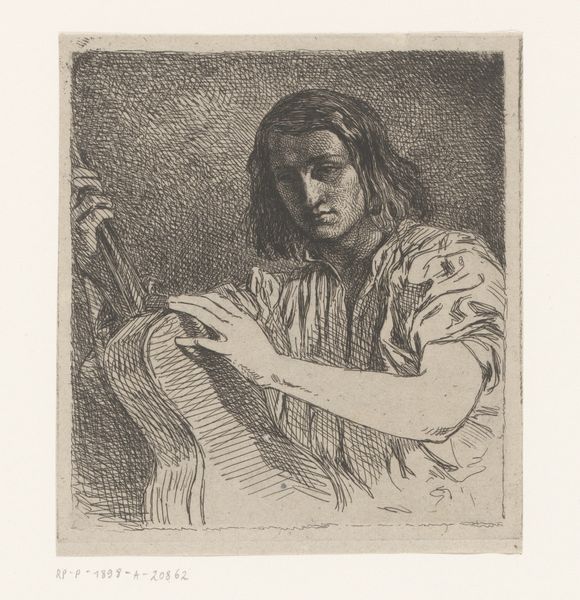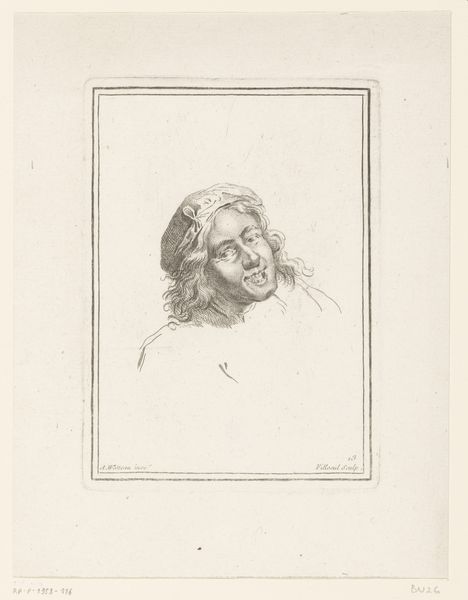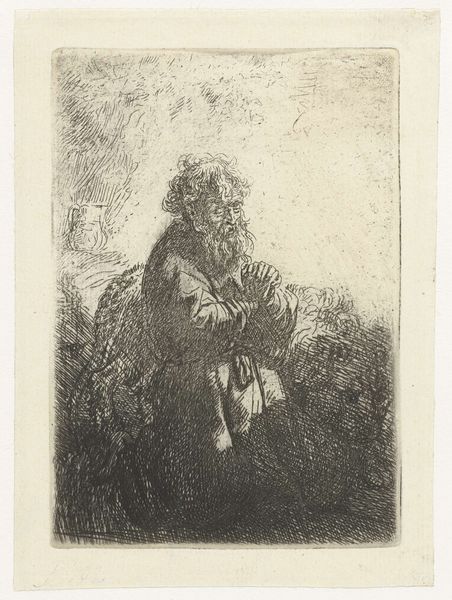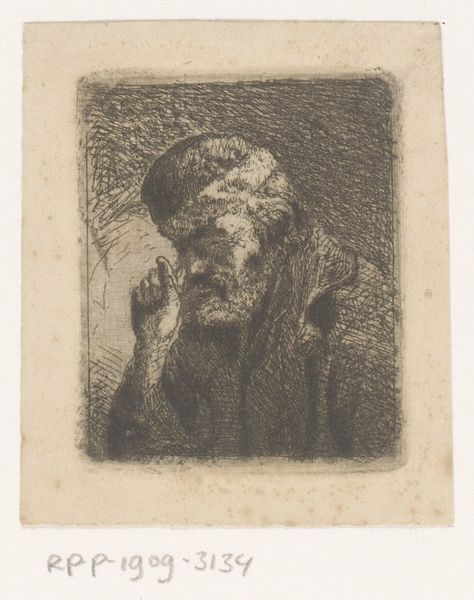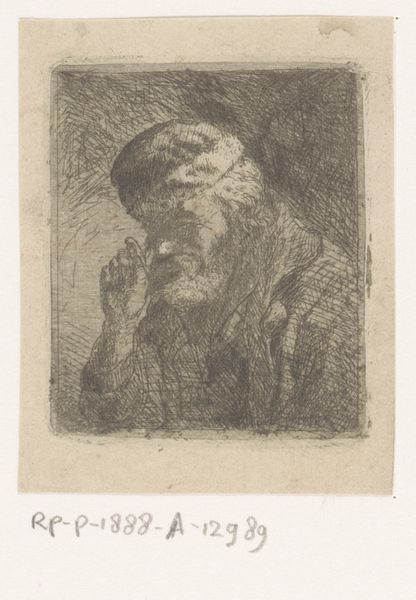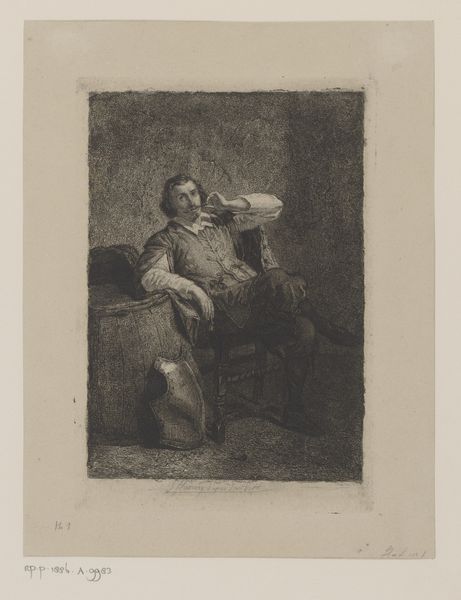
Dimensions: height 122 mm, width 113 mm
Copyright: Rijks Museum: Open Domain
Charles Jacque created this etching, Lachende man, sometime in the 19th century. The laughing man’s unkempt appearance and coarse features suggest this is a work aimed at the emerging urban middle class in France. Such imagery became popular as newly wealthy merchants and professionals sought to distinguish themselves from what they considered the vulgarity of the lower classes. Jacque’s print participates in a broader cultural phenomenon where images circulated widely via print media, reinforcing social hierarchies. The humor may be a kind of ‘carnival-esque’ laughter – one that mocks authority, hinting at underlying social tensions in a rapidly changing society. Understanding this image fully requires looking into the visual culture of 19th-century France, exploring how printmaking served as a tool for social commentary and class distinction. By examining these historical contexts, we can gain deeper insights into the social life of art.
Comments
No comments
Be the first to comment and join the conversation on the ultimate creative platform.
